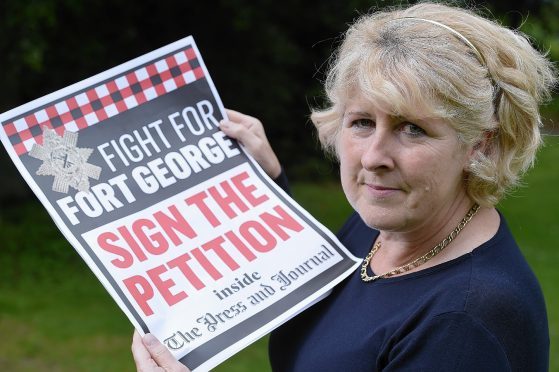The Press and Journal’s campaign to save 250-year-old Fort George from possible closure has reached another significant milestone with 3,000-plus people now registering their support.
A sense of foreboding was in the air at the garrison over the weekend when a timewarp engulfed the military gem, fortunately only in the form of re-enactments of past bloodshed.
Gory history of the Jacobite risings of 1689, 1717 and 1745 were brought to life by actors in period costume at Fort George as part of a popular annual fixture that draws big crowds to the iconic barracks.
They told the story of three key periods during a time of unrest and civil war in Scotland in “The Stuarts’ Struggle.”
Visitors witnessed imagery of Jacobites attempting to restore exiled King James VII and his Stuart descendants to the throne.
The real-life timeline at the Highland fortress charted the Jacobites’ war against the Government armies including their victory at the Battle of Killiecrankie in 1689, their defeat at the Battle of Sheriffmuir in 1715, and the rising of 1745 and its aftermath.
The 1745 rising is arguably the best known. It saw Charles Edward Stuart, James VII’s grandson – better known as Bonnie Prince Charlie – return to Scotland to reclaim the throne of Britain.
Living history camps offered an insight into the life of a Jacobite soldier, ably assisted by special guided tours of Fort George.
The military base, which was commissioned by the government after the Battle of Culloden to stop further risings, remains a working barracks. It has been the home of the Black Watch for the past nine years.
Campaigners, many of them ex service personnel and WWII veterans, have joined the chorus urging the Ministry of Defence not to desert the garrison as part of cost-cutting proposals this autumn.
The UK Government is reviewing the base’s future as part of proposals to cut its overall estate by a third to save £1billion.
Figures obtained by the P&J have confirmed that Fort George has the lowest maintenance bill of all of the country’s main infantry bases.
The campaign has also highlighted the fact that the base attracts more than 60,000 visitors a year. It contributes more than £16million a year to the local economy.
